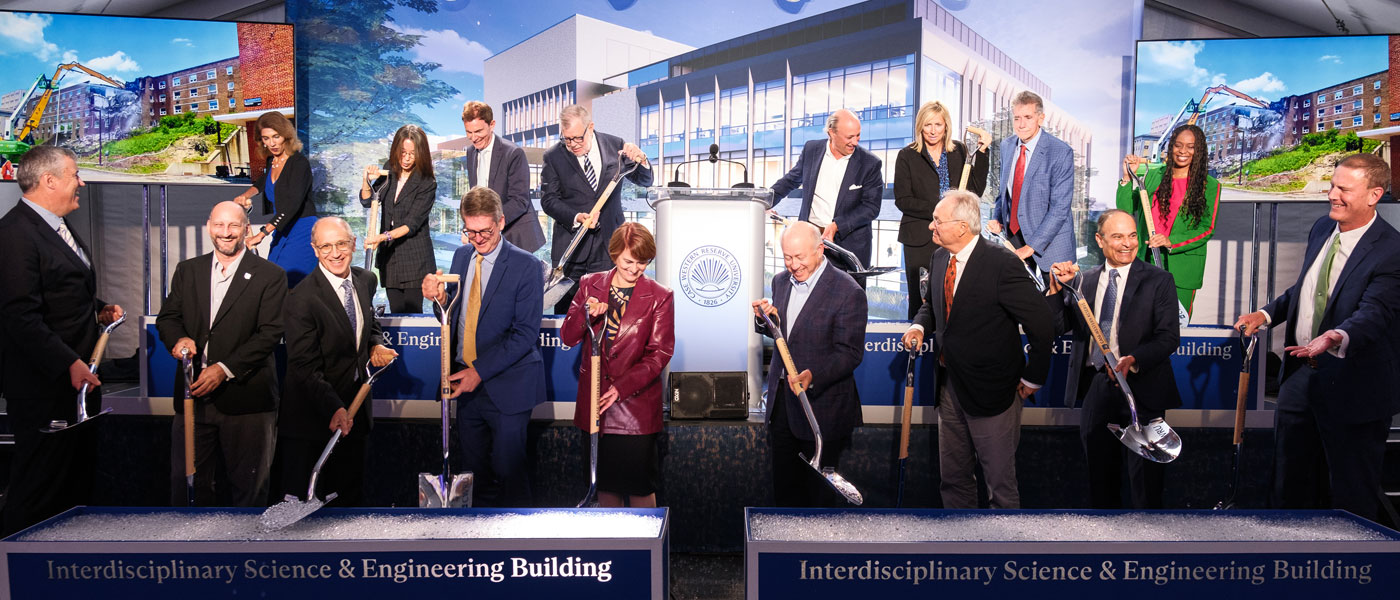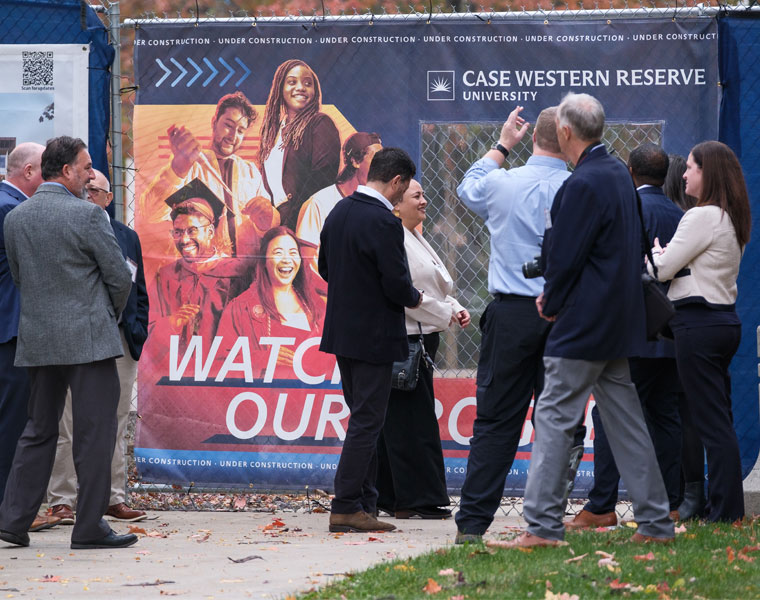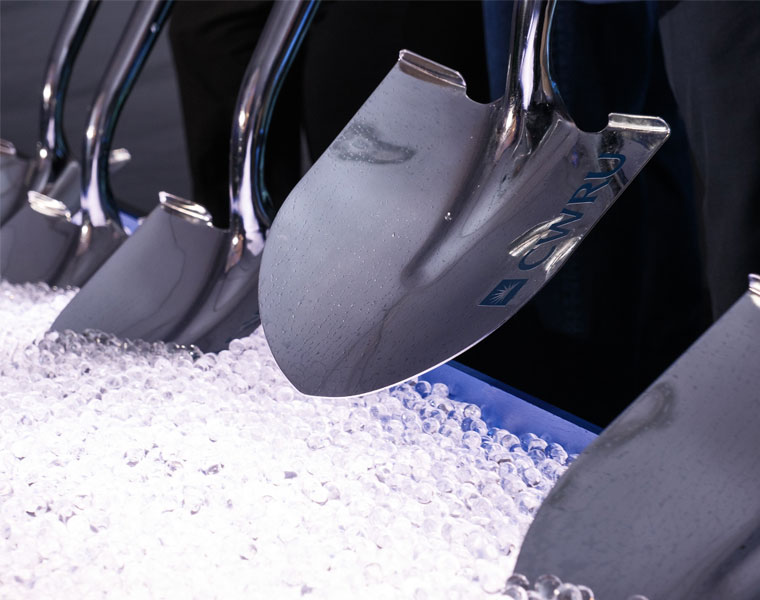As construction cranes for the Interdisciplinary Science and Engineering Building towered in the background, Case Western Reserve leadership, supporters and community partners took part in a ceremonial groundbreaking Wednesday evening for the project—a 189,000-square-foot, state-of-the-art facility with dedicated research, lab and collaboration spaces.
“The ISEB will be the embodiment of our university’s highest priorities: research, academics and community engagement,” President Eric W. Kaler said. “Here, scientists, engineers and visionary leaders will bring discoveries to improve lives and change the world.”
When it opens in the fall of 2026, the building—the largest ever on the Case Quad—will be home to more than 60 principal investigators and their teams from the College of Arts and Sciences, Case School of Engineering, School of Medicine and others. Students at all levels will be active participants in collaborative discovery and innovation in areas such as climate change, artificial intelligence, sustainable manufacturing and materials science.
“It’s a very exciting time here at Case Western Reserve University as we continue to grow as one of the country’s top research institutions and witness our entire community of students, faculty, staff, alumni, and friends coming together to affect change in both our local and global communities,” Fred DiSanto (WRC ’85, MGT ’86), chair of the CWRU Board of Trustees and a member of the ISEB campaign cabinet, said at the ceremony.
Adding to the excitement: During the groundbreaking, DiSanto and ISEB cabinet co-chair Aarti Chandna (GRS ’88, computer science) announced President Kaler and his wife, Karen, are adding their own $1 million gift to the project.
“Karen and I are deeply committed to investing in people—especially in their ideas, imagination and drive to improve humanity,” President Kaler said. “We are proud to join our generous supporters as part of this endeavor.”
Additional financial support announced at the event included a $15 million gift from the Eric and Jane Nord Family Fund and a $2 million gift from the Jack, Joseph and Morton Mandel Foundation; more information on these gifts will be shared soon. These gifts bring total fundraising support so far to $110.6 million; $150 million of the $300 million project will be funded through a century bond issued in 2023.
Though the ISEB’s groundbreaking ceremony just formally occurred, work on the construction site began nearly one year ago and, this spring, demolition of Yost Hall began to create space for the building.
The ISEB will include wet labs, dry labs, a shared core lab and technology platforms. The first floor—to be named in honor of the Roger (CIT ’77) and Kayoko Susi family—will include an open area to provide places for people to gather for conversations both casual and research-focused.
Designed by HGA, a national architecture firm with extensive experience in higher education, and constructed by Discovery Builders, composed of four firms—Turner Construction, Next Generation Construction, The AKA Team, and Adrian Maldonado & Associates—the building will offer a welcoming façade to passersby on Martin Luther King Jr. Drive. It aims to serve as a visual reminder of the university’s commitment to community engagement and external partnership. Visitors will be welcomed through the Tinkham Veale Gateway—a gardened plaza that will serve as a central connector to Case Quad.
In addition to recognizing the support of generous donors who have helped make the project a reality, Kaler thanked U.S. Sen. Sherrod Brown and U.S. Rep. Shontel Brown for their leadership in securing nearly $1 million in congressional allocations to acquire critical research equipment for the ISEB: “Our elected officials at all levels have been supportive of our plans with the ISEB so that, together, we can strengthen our connection to and engagement with the community.”
For President Kaler, the building integrates his three priorities for the university: elevating academic excellence, expanding research and enhancing community engagement. Since arriving at CWRU, he has envisioned creating a world-class research facility that would also create a vital connection to the surrounding neighborhood.
“When President Kaler shared his vision for the ISEB and growing the research enterprise at CWRU, I was truly inspired,” said Chandna who, along with her husband Asheem Chandna (CIT ’86; GRS ’88, computer engineering), co-chairs the ISEB campaign cabinet. Aarti Chandna also serves as vice chair of the university’s Board of Trustees. “I was moved thinking about the value our brilliant faculty, staff and students will bring to the world through research conducted in the ISEB.”







